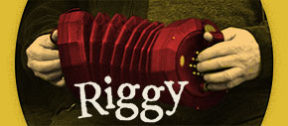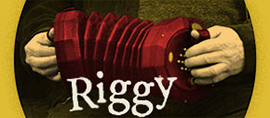
I’ve been singing about Jesus all my life, without being a “believer” in any sense of the word. I bet it started with those tiny booklets of Christmas Carols that the John Hancock Insurance Company gave away. I remember walking in crunchy snow, juggling a candle and the carol booklet, dripping wax all over my mittens, and having a transcendent experience hearing my voice sing different notes than the people around me, and it sounded and felt good! The words seemed odd and, frankly, irrelevant, just a frame to hang the beautiful music upon. And everybody’s faces looked so happy in that light. Easy to believe that people could be very nice, indeed. Harmonious.
In my early teens I frequently went to coffee houses in Greenwich Village to hear a wide variety of folk music. I heard Ramblin’ Jack Elliott sing “Will the Circle be Unbroken,” and loved singing along. The Charles River Valley Boys sang “On the Jericho Road” and blew me away. Some of the old players, like Reverend Gary Davis, sang what I learned was Gospel, which I quickly fell in love with.

I dug deeper in the record store bins and found others, like Sam Cooke and the Soul Stirrers (his pre-pop form) and The Staple Singers.

My little town, a dozen miles from mid-town Manhattan, was very segregated and had a black neighborhood called Vauxhall where folks lived in old Civil-War era homes and had similar churches with big front porches. I would go sit on the steps on Sunday mornings and listen through the door to the wild, passionate singing.
Much later I heard that some of my Gospel heroes and singing partners, including Helen Schneyer and Lisa Neustadt, had been raised by black housekeepers who took them to church. In spite of being born Jewish, their parents were non-practicing and more interested in Socialism than religion. This is how they both imprinted on African-American sacred music.

My late wife Mary Heidecker-Rackin was very interested in Gospel music in many forms, but her involvement had a huge believer aspect. She attended her church EVERY Sunday, and I went to mine, the slopes of Mt. Tamalpais, and we had a great understanding. The music at her church was very much in the Black Gospel tradition, and the choir, The Lighthouse Singers, received tutelage from the veteran Marin City singer Helen Stephens. I attended their concerts from time to time and really enjoyed the spirit.
Mary and I shared a love of Sacred Harp, a folk form of hymn singing that has deep roots today in the American South and New England, and OLD England before that as Gallery Singing. Actually, the first time I was exposed to it was back in high school hearing The Young Tradition, my first and all-time favorite English unaccompanied harmony group, do “Wondrous Love.” How appropriately named!

It is also known as Shape Note, because the notes had shapes to help the singers find them in their voices even if they couldn’t read music. I was introduced to Sacred Harp in Boston and sang around dining tables at BU with Warren Steele and at Old Joe Clark House in Cambridge. Mary and I would travel to day-long “Sings” around Northern California and receive instruction from great Southern teachers like Richard DeLong and Hugh McGraw.
Mary loved my varied approach to the singing and wished her church could add some of it to the mix of music they did on Sundays. Her mother was also an impassioned believer and she wanted her to know that I had this other side. So I produced a CD of Sacred Music called Search Hills and Valleys Through for those two small audiences.

This was not my first “gospel” recording.
The year before I left Massachusetts for California I got a chance to sing on Jean Redpath and Lisa Neustadt’s Anywhere Is Home as a member of the Angel Band.

A few years ago I helped make a recording of this kind of music with a group of friends that regularly attend a singing retreat in Sonoma County.

I wrote about the experience, thusly:
“A vibrant musical niche that few concert-goers or even musicians are aware of thrives across the globe: a dozen or so folks meeting in living rooms, quiet pubs, ships’ holds, or church basements, to sing together in sweet, intuitive harmony. It may be hymns, or drinking songs, or chanteys, but the essential element is the delicious pleasure of a song that is well sung by a group of friends.”

